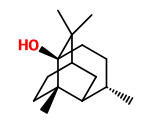Dies ist eine alte Version des Dokuments!
Valeriana jatamansi Jones - syn. Valeriana wallichii DC. - Valerianaceae 蜘蛛香 zhi zhu xiang (chin.), Indian valerian, Indischer Baldrian
Perennial herb, 20-70 cm tall, native to Bhutan, India, Nepal, Northern Thailand, Vietnam; rhizomes short, robust, 0.5-2 cm in diam., nodes crowded; roots fibrous; stems 1 to several, erect, glabrate to pubescent, more densely so at nodes; basal leaves persistent, rosulate; petiole 4-10 cm; blade simple, cordate to cordate-ovate, 2-14 × 3-10 cm, hispidulous or glabrous, margin irregularly crenulate, crenate, or dentate, apex acute; cauline leaves in 2 or 3 pairs, sessile or subsessile, 1-3 cm, simple or trifoliolate; lateral lobes reduced; terminal lobe ovate; inflorescence corymbiform, villous at nodes; corolla white or pinkish, funnelform; flowers polygamous; bisexual flowers 3-4 mm, female flowers ca. 1.5 mm, stamens and style exserted; achenes narrowly ovoid, 2-2.5 × 1-1.5 mm, both sides villous.
http://www.efloras.org/florataxon.aspx?flora_id=2&taxon_id=200022557
„Indian valerian root oil obtained from the roots of the plant V. wallichi collected from different areas has been examined. Neutral portion of the oil contains ar-curcumene, α,β,γ-patchoulenes, patchouli alcohol, β-sitosterol, valeranone, maali-oxide, maaliol, calarene, and the new sesquiterpene hydrocarbon β-bergamotene which is an isoprenologue of β-pinene. Acidic portion of the oil is composed of formic, propionic, butyric, isovaleric, β-methyl valeric, palmitic, steric acids, and isovaleryl ester of α-hydroxyisovaleric acid along with some unidentified acids.“
[Terpenoids-XLVI : Components of Indian valerian root oil. C.S. Narayanan, K.S. Kulkarni, A.S. Vaidya, S. Kanthamani, G.Lakshmi Kumari, B.V. Bapat, S.K. Paknikar, S.N. Kulkarni, G.R. Kelkar, S.C. Bhattacharyya, Tetrahedron Vol.20 (4) 963-968 (1964)]
„The volatile constituents isolated from roots and rhizomes of Valeriana wallichii DC. ( = V. jatamansi Jones) were investigated by GC and GC-MS (EI and NICI) analysis. The plant material was obtained from different sources, namely from a local market in Kathmandu (Nepal), from plants grown in The Netherlands and in Germany, and from commercially available material from several German importers. The various roots and rhizomes yielded between 0.09 and 1.30% (v/w) essential oil on a dry weight basis. The main constituents of the oils from the plants grown in Europe were an unidentified sesquiterpene hydrocarbon, α-santalene, ar-curcumene and xanthorrhizol. In the oils from the Nepalese material and from the commercially available roots, except in one sample, patchouli alcohol was the main component.“
[Composition of the Essential Oil from Roots and Rhizomes of Valeriana wallichii DC., Rein Bos, Herman J. Woerdenbag, Henk Hendriks, H. Friso Smit, Håkan V. Wikström and Johannes J. C. Scheffer, Flavour and Fragrance Journal, 1997, Vol.12 (2) 123-131]
The chloroform extract of V. wallichii roots showed antileishmanial activity, one active ingredient found was caffeic acid bornyl ester.
[Glaser, Jan, et al. „Antileishmanial lead structures from nature: Analysis of structure-activity relationships of a compound library derived from caffeic acid bornyl ester.“ Molecules 19.2 (2014): 1394-1410] http://www.mdpi.com/1420-3049/19/2/1394/htm

Valeriana jatamansi (1) in: Flora of China]

